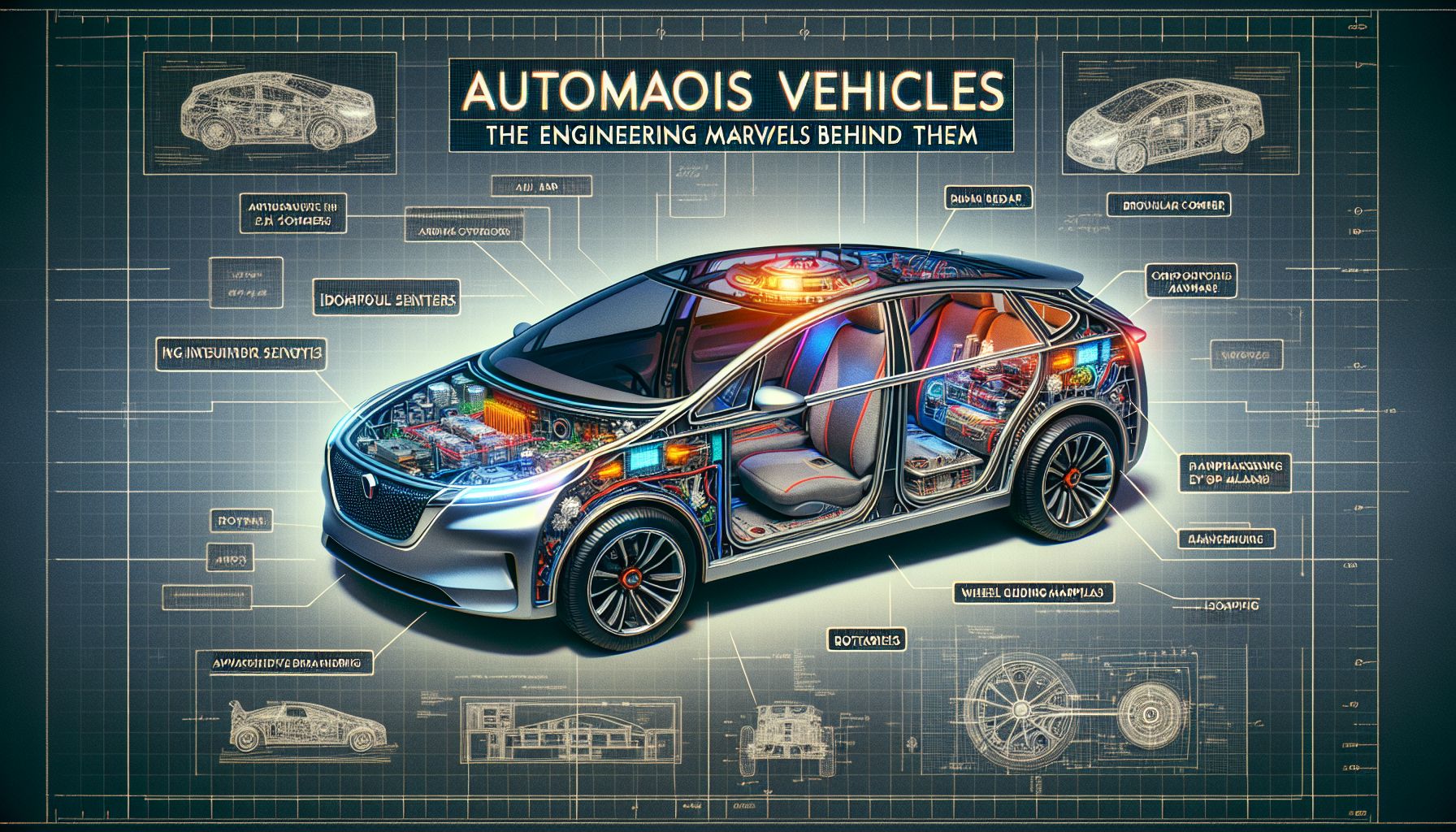📌 Let’s explore the topic in depth and see what insights we can uncover.
⚡ “Just a decade ago, self-driving cars existed only in science fiction — today, they’re engineering reality. Let’s buckle up and delve into the brains of these autonomous marvels that are revolutionizing our roads!”
Imagine a world where you don’t have to worry about driving through traffic, finding parking spaces, or even owning a car. Sounds like a utopian dream, doesn’t it? Well, it’s not as far-fetched as it may seem. Welcome to the era of autonomous vehicles, where cars drive themselves and the term ‘behind the wheel’ is becoming increasingly obsolete. 🔍 Interestingly, no magic, but a testament to the marvels of modern engineering. From Google’s Waymo to Tesla’s Autopilot, autonomous vehicles are gradually becoming a reality, promising to revolutionize the way we commute. But how does this futuristic transportation mode work? What engineering feats make it possible for a car to navigate itself without human input? In this blog post, we will delve into the engineering marvels behind autonomous vehicles. Buckle up for an exciting journey through the technological advancements that are bringing us closer to a world of self-driving cars.
Unmasking the Brain of Autonomous Vehicles: Artificial Intelligence

Unveiling the Technological Magic of Autonomous Vehicles
When we talk about autonomous vehicles, one term that inevitably comes up is Artificial Intelligence (AI). AI is the brain behind these self-driving machines. Just as humans use their brains to process information and make decisions while driving, autonomous vehicles use AI to do the same. AI is not just a single piece of technology, but a combination of various sub-disciplines, including Machine Learning (ML), Deep Learning (DL), and Computer Vision. ML and DL algorithms allow the vehicle to learn from its past experiences, developing an understanding of different driving scenarios. Meanwhile, computer vision techniques help the car perceive its surroundings, identifying objects, pedestrians, and other vehicles. The AI in autonomous vehicles is a perfect example of supervised learning. In supervised learning, the AI system is trained using labeled data. For instance, the system is fed thousands of images of stop signs with a label indicating that these are indeed stop signs. Over time, the AI system learns to recognize stop signs in real-world scenarios.
🛰️ The Eye in the Sky: GPS and Mapping Technology
While AI forms the brain of autonomous vehicles, Global Positioning System (GPS) and mapping technology act as their eyes in the sky. These components provide the vehicle with a sense of location and direction, helping it navigate through a complex world. High-precision GPS receivers are used in autonomous vehicles to determine their exact location. The GPS data is then combined with detailed 3D maps to guide the vehicle along its route. These maps are not your average Google Maps; they contain a wealth of information, including the position and height of curbs, location of traffic signals, and even the width of lanes. The use of GPS and mapping technology in autonomous vehicles is like an eagle soaring high in the sky, keeping a watchful eye on the path ahead. It’s like having a personal guide, continuously whispering directions in the driver’s ear.
📡 Sensing the World: Lidar, Radar, and Cameras
While GPS and mapping technology give a broad perspective, autonomous vehicles need a more detailed understanding of their immediate surroundings. 🔍 Interestingly, where sensors like Lidar, Radar, and cameras come into play. Lidar, which stands for Light Detection and Ranging, is like the vehicle’s flashlight in the darkness. It sends out pulses of light and measures the time it takes for the light to bounce back after hitting an object. This information is used to create a detailed 3D map of the vehicle’s surroundings, helping it detect obstacles and navigate safely. Radar works similarly to Lidar, but instead of light, it uses radio waves. Radar is particularly useful in adverse weather conditions like fog or rain, where visibility may be poor. It’s like the vehicle’s sixth sense, helping it see through the fog. Cameras, on the other hand, capture visual data, just like our eyes do. 🧩 As for They, they’re used for tasks like reading road signs and detecting traffic lights. The role of cameras in autonomous vehicles is akin to a sharp-eyed hawk, spotting details from afar and reacting accordingly.
💻 The Conductor: Vehicle Control Systems
The final piece of the puzzle in autonomous vehicles is the vehicle control systems. These systems take the data collected by the AI, GPS, mapping technology, and sensors, and translate it into action. 🧩 As for They, they’re the conductors of the autonomous vehicle orchestra, guiding each component to play its part at the right time. The vehicle control systems manage various elements, from the steering and braking to the acceleration and signaling. 🧩 As for They, they’re like the puppet masters, pulling the strings to make the vehicle move and stop, turn and swerve, all based on the inputs from the AI and sensors.
🧭 Conclusion
Autonomous vehicles are not just about replacing human drivers; they represent a paradigm shift in how we perceive transportation. The engineering marvels behind them, from AI and GPS to Lidar and vehicle control systems, are transforming the concept of driving from a manual task to an automated process. As we stand on the brink of this transportation revolution, it’s worth appreciating the incredible engineering feats that are making it possible. These marvels are not just about technology; they are about vision, innovation, and the relentless pursuit of a safer, more efficient, and more sustainable transportation future. So the next time you see a self-driving car whizzing past, take a moment to appreciate the marvel of engineering that it represents. After all, it’s not every day that you get to witness the future unfolding before your eyes.
🌐 Thanks for reading — more tech trends coming soon!
